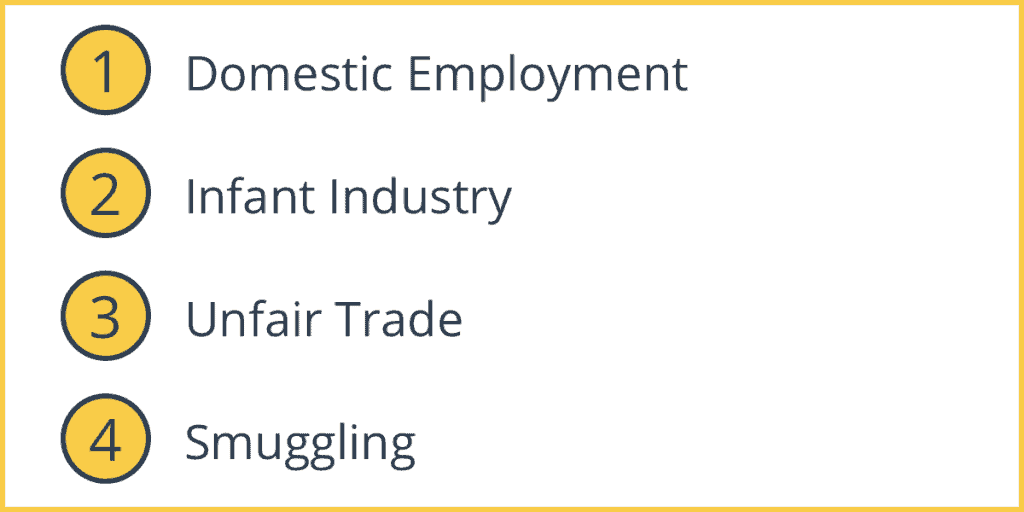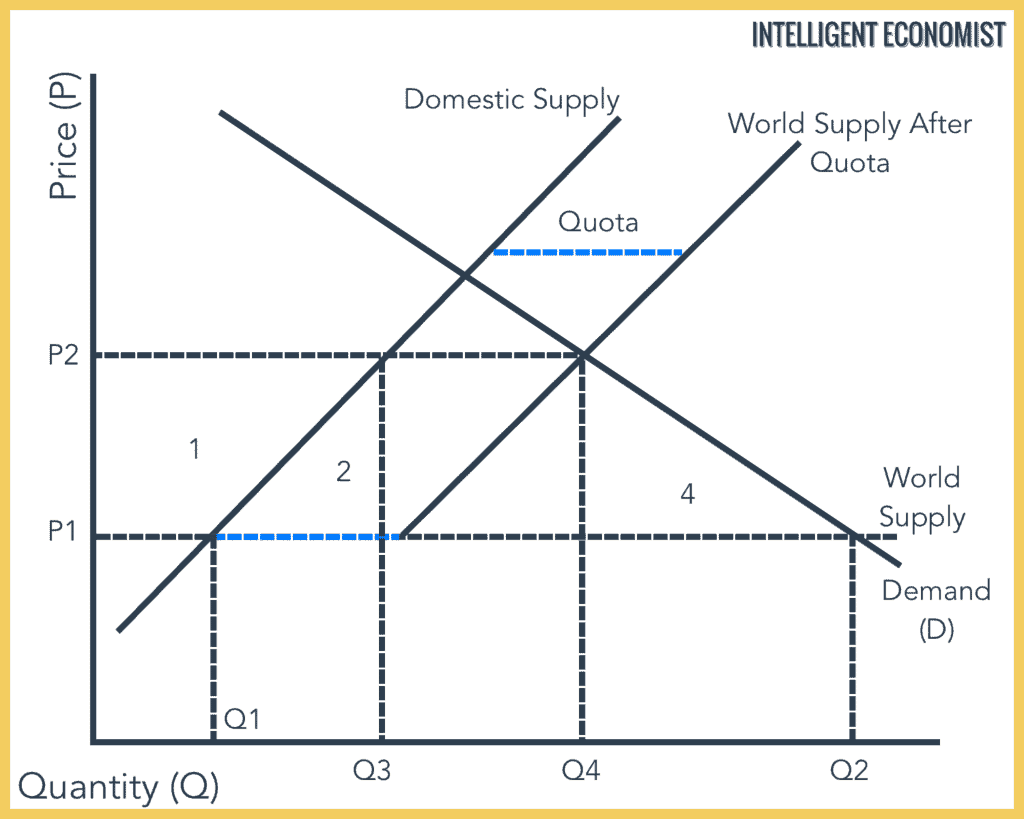A quota, which is a type of trade barrier, is a restriction on the quantity that can be imported into a country. Quotas and Tariffs are effectively the same except that governments collect revenue from tariffs while exporting firms can collect extra revenue from quotas (as seen below in box 3). A quota increases the firm’s export revenues.
Effects of A Quota

1. Domestic Employment
A quota leads to an increase in domestic production, which results in an increase in local employment at the expense of consumers paying higher prices for the domestic product.
2. Infant Industry
Quotas are a particularly useful form of protection if the industry is new and maturing. This form of protection can help infant industries compete against lower-priced foreign goods.
3. Unfair Trade
Some countries apply quotas to protect local industries from dumping. Dumping occurs when producers in foreign countries have unfair advantages to lower costs, such as subsidies or controversial labor laws allowing them to produce at a much lower cost. This means they can sell their products in a foreign market at a lower price than the actual cost of production.
4. Smuggling
To combat a quota and high price, sometimes a black market is created where smugglers illegally import the goods to circumvent the quota. This could diminish the effectiveness of the quota.
The goal of a quota is to reduce imports and protect domestic production a good from competition abroad. As demand for the foreign good is artificially lowered, domestic consumers are forced to increase consumption of the domestically produced product.
Quota Graph

Initial Import Quantity
At world price P1, the quantity demanded locally is Q2, while Q1 represents the quantity supplied by local firms. This can be seen at the intersection of World Supply curve and the domestic demand and supply curves. So quantity imported = Q2 – Q1 or the line Q1Q2.
Quota
If the government decides to impose a quota, i.e., limit the quantity a foreign firm can supply, then the world supply becomes Domestic Supply + the Quota.
New Equilibrium
The result is an increase in price from P1 to P2. At P1. There is excess demand in the market (Q1Q2), so the price keeps shifting till it reaches P2, where the market is at equilibrium.
New Import Quantity
At P2, local firms supply Q3, and the local demand is Q4. The rest is imported, which is equal to the Quota that was earlier imposed by the government. Quotas increase the price, decrease consumption but increase local production.
Economic Effect
- The change in Producer Surplus = + Box 1
- The change in Consumer Surplus = – Box 1, Box 2, Box 3, Box 4
- The change in Welfare = – Box 2, Box 3, Box 4
- Box 3 is collected by foreign firms now.
- Box 2 represents production inefficiency & Box 4 represents consumption inefficiency.


Why would the increase in price be greater than in an inelastic good compared to an elastic good if the decrease in Quantity demanded for both goods is equal due to the imposement of the quota on both goods?